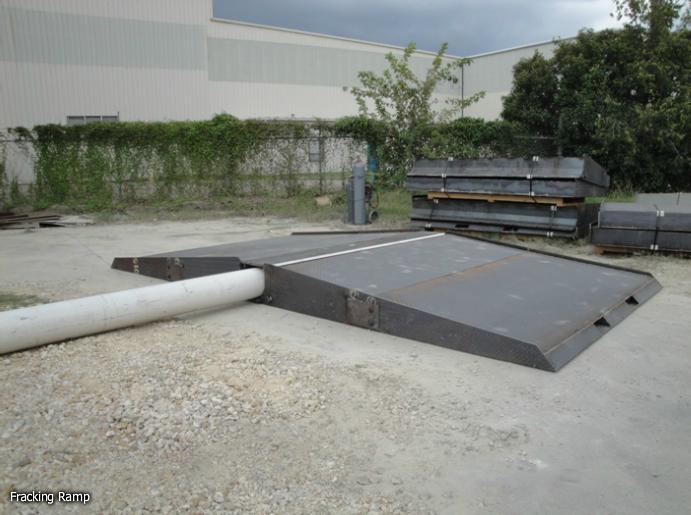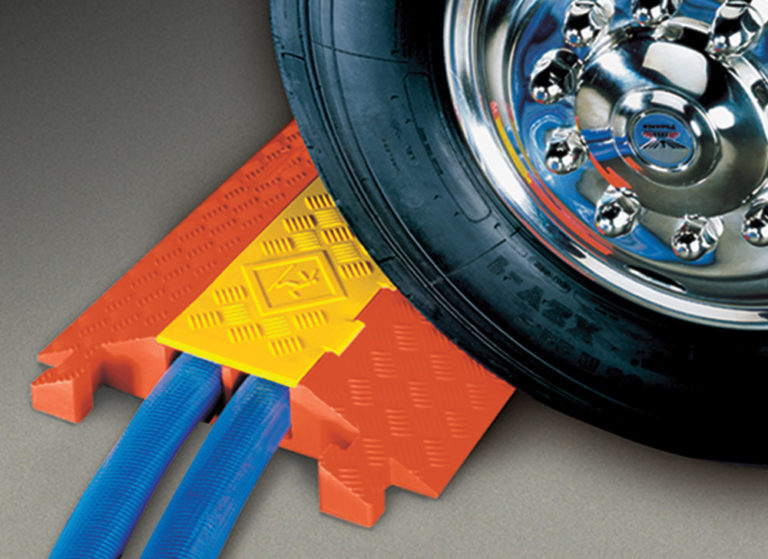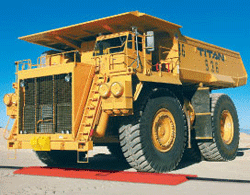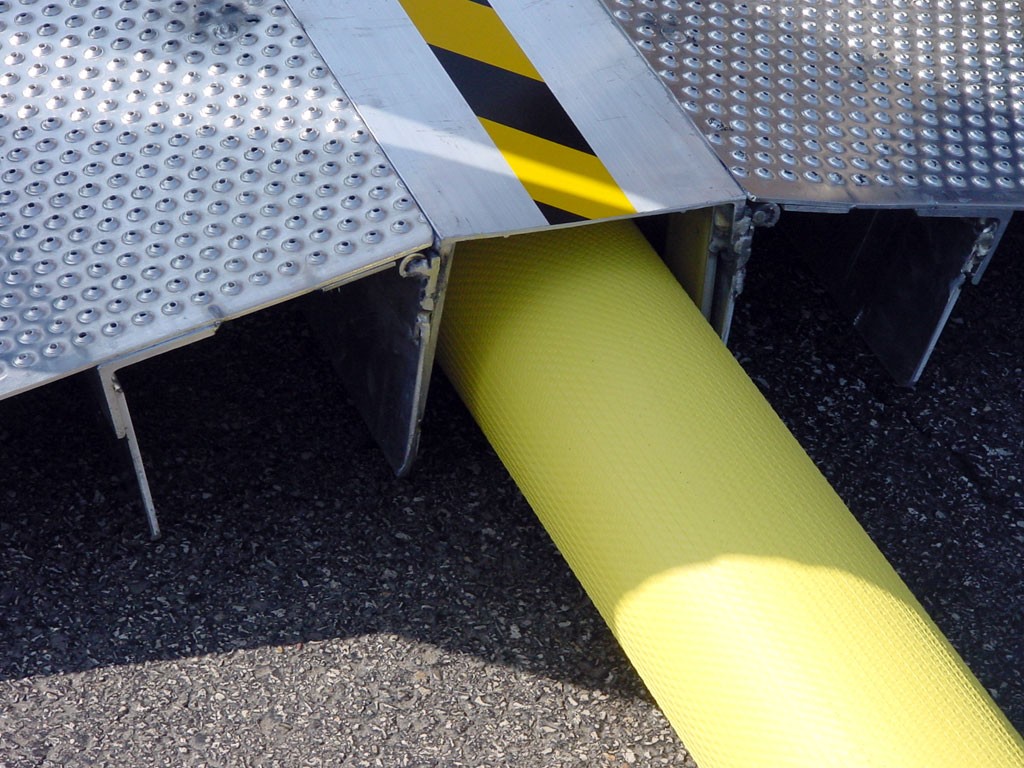In the bustling world of construction sites, event venues, and industrial settings, the management of pipes, cables, and hoses can be a logistical and safety challenge. Ensuring the seamless flow of traffic while safeguarding both people and equipment is a multifaceted task that demands reliable solutions. In these situations, pipe and cable ramps are a must. These robust ramps are designed to protect, organize, and maintain the integrity of essential utilities.
In this blog, we’ll delve deeper into the intricacies of pipe and cable ramps, exploring their functionalities, key specifications, and the process of selecting the ideal ramp for your needs.
What are Pipe and Cable Ramps?
Pipe and cable ramps, also known as hose ramps or cable protectors, serve as indispensable guardians of critical infrastructure. At their core, these ramps have three primary functions: protection, organization, and accessibility.

Protection
Pipe and cable ramps protect vulnerable utilities such as pipes, hoses, and cables from external threats posed by vehicles or foot traffic. By creating a barrier between the utilities and potential hazards, these ramps mitigate the risk of damage, leaks, and accidents. Not only do they keep the pipe, hose, or cable safe from damage, but they also protect surrounding equipment, vehicles, and people.
Organization
With their integrated channels, these ramps provide a structured framework for organizing and securing pipes, cables, and hoses. This arrangement not only minimizes tripping hazards but also enhances the overall efficiency of the environment.
Accessibility
By facilitating the smooth passage of vehicles, pedestrians, and equipment over pipes, hoses, and cables, these ramps ensure unhindered access to essential utilities. Their usage creates safer working conditions for personnel as well as a more accessible environment for pedestrians when used in event spaces.
Key Features and Specs of Pipe and Cable Ramps
Before determining the suitability of pipe and cable ramps for your applications, it’s important to understand their key features and specifications.
Size and Dimensions
The dimensions of a ramp, including its length, width, and height, directly influence its compatibility with specific utilities and traffic volumes. Additionally, the size of the channels or grooves must align with the diameter and quantity of pipes, cables, or hoses requiring protection. After all, the ramp will only work effectively if it fits around the pipe or cable.
Load Capacity
Another factor central to the functionality of any ramp is its weight capacity. Pipe and cable ramps are available in a spectrum of weight capacities, ranging from pedestrian-friendly models to heavy-duty variants capable of accommodating large vehicles and equipment. Assessing the anticipated load requirements is crucial for selecting the appropriate ramp to ensure optimal performance and safety.

Channel Configuration
Pipe and cable ramps feature various channel configurations to accommodate different arrangements of pipes, cables, and hoses. Single-channel ramps are suitable for straightforward applications, while multi-channel or modular ramps offer versatility in organizing complex utility networks. Assessing the desired arrangement and accessibility requirements is essential for selecting the most appropriate channel configuration.
Material
The material used to build pipe ramps depends upon the size, dimensions, and load capacity required of the ramp. For example, for light duty pedestrian ramps common materials include rubber, polyurethane, and plastic. Each of these materials offers distinct advantages in terms of durability, weather resistance, and environmental compatibility.
Conversely, heavy duty pipe, conduit, and fracking ramps that will see vehicle and machinery traffic are almost always made of steel because of it’s load-bearing capacity.
The surface texture of the ramp also plays a pivotal role in ensuring safety and traction for both vehicles and pedestrians. Non-slip surfaces enhance grip and stability, minimizing the risk of skidding or accidents, particularly in adverse weather conditions. Furthermore, ramps may incorporate features such as reflectors or color contrast to enhance visibility and alertness, further augmenting safety measures.
How to Choose the Right Pipe and Cable Ramp
Determining which pipe and cable ramp will work best for your application directly correlates with the features and specs discussed in the previous section. When selecting your ramp, it’s crucial to keep these three factors in mind:1. Identify Your Size Requirements
Before diving into the sea of available options, it’s essential to clearly define your size requirements. What is the diameter of the pipe or cable you want to cover? How much of the length of the pipe or cable do you want to cover? Should the ramp have one or multiple channels? By understanding your specific needs, you can narrow down your options and determine if you need something smaller like a multi-channeled cable protector or a more industrial fracking ramp.
2. Assess Load Capacity
One of the most critical factors to consider when selecting a pipe and cable ramp is its load capacity. Ensure that the ramp you choose can safely support the weight of vehicles, equipment, or foot traffic that will be passing over it. Take into account not only the static weight but also any dynamic loads that may occur, such as heavy machinery crossing the ramp.3. Consider Construction & Safety Features
Pipe and cable ramps are available in a variety of materials and each material offers its own set of advantages and considerations. Hard-wearing polyurethane ramps are lightweight and corrosion-resistant, ideal for events or most construction applications. Metal ramps offer superior strength and durability, making them suitable for heavy-duty industrial settings like oil fields. Consider the specific requirements of your application, such as durability, weather resistance, and ease of installation, when choosing the appropriate material for your ramp.
Safety should also always be a top priority when selecting a pipe and cable ramp. Look for ramps with features such as non-slip surfaces, beveled edges for smooth transitions, and secure fastening options to prevent movement or displacement. Additionally, consider whether the ramp needs to comply with any industry standards or regulations, such as ADA requirements for accessibility.
The Ideal Solution for Improving the Safety and Efficacy of Pipes, Chords, and Hoses

In summary, pipe and cable ramps epitomize the convergence of functionality, safety, and efficiency in the realm of infrastructure management. Through their robust design, versatile configurations, and steadfast performance, these ramps serve as indispensable guardians of essential utilities, ensuring optimal productivity and safety. HandiRamp’s pipe and cable ramps create a safer, more efficient environment for construction sites, event venues, and industrial facilities alike. If you have any questions or are interested in a ramp for your location, give our friendly ramp experts a call at 800-876-7267!


